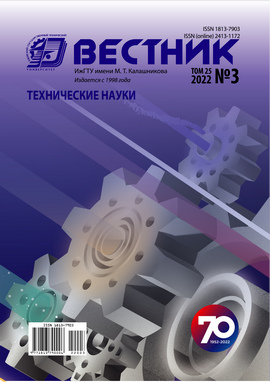Video Compression Performance Evaluation Method in Transmission via a Low-Speed Channel
DOI:
https://doi.org/10.22213/2413-1172-2022-3-74-81Keywords:
video compression, video codecs, video processing, video compression quality evaluation, interference resistance of video compression, video frames semantic analysisAbstract
The paper presents an overview of the works devoted to video compression algorithms based on artificial intelligence methods. Two main directions for the development of such algorithms are identified - these are the development of modules for post-processing the results of the work of classical algorithms and the development of algorithms that completely replace existing video codecs. The problems of video compression algorithms performance evaluation criteria are considered. It was found that criteria based on the calculation of the standard deviation, such as PSNR, cannot be used to assess the quality of video data compression algorithms when operating under the influence of radio interference, due to the strong influence on the evaluation result of artifacts that inevitably arise as a result of the effects of this kind of interference. An alternative quality assessment method based on the semantic analysis of frames is proposed, which can be used to assess the noise immunity of video data transmission algorithms. The presented estimation method uses a frame-by-frame comparison of the original and restored video sequence, similar to PSNR. However, unlike the latter, it ignores artifacts that occur during exposure to radio interference, due to the use of semantic frame analysis, which consists in searching for objects in the image using approaches based on artificial intelligence. To compare the found objects on the original and reconstructed frames, an estimate is used based on the geometric position of the found objects in the image. After that, the data indicator is averaged for all frames of the video sequence in order to obtain the resulting similarity indicator of the restored video and the original.References
Ma S. Image and video compression with neural networks: A review: IEEE Transactions on Circuits and Systems for Video Technology, 2019, vol. 30, no. 6, pp. 1683-1698.
Liu D. Deep learning-based technology in responses to the joint call for proposals on video compression with capability beyond HEVC: IEEE Transactions on Circuits and Systems for Video Technology, 2019, vol. 30, no. 5, pp. 1267-1280.
Cheng Z., Sun H., Takeuchi M., Katto J. Learned image compression with discretized gaussian mixture likelihoods and attention modules: Proc. of the IEEE Conference on Computer Vision and Pattern Recognition (CVPR), 2020.
Ding D. Advances in video compression system using deep neural network: A review and case studies: Proc. of the IEEE, 2021, vol. 109, no. 9, pp. 1494-1520.
Gorodilov A., Gavrilov D., Schelkunov D. Neural Networks for Image and Video Compression.International Conference on Artificial Intelligence Applications and Innovations (IC-AIAI), 2018, pp. 37-41. URL: https://ieeexplore.ieee.org/document/8674448 (дата обращения: 10.01.2022).
Wiegand T. Overview of the H. 264/AVC video coding standard: IEEE Transactions on circuits and systems for video technology, 2003, vol. 13, no. 7, pp. 560-576.
Li Y. Convolutional Neural Network-Based Block Up-Sampling for Intra Frame Coding: IEEE Transactions on Circuits and Systems for Video Technology, 2018, vol. 28, no. 9, pp. 2316-2330. DOI: 10.1109/ TCSVT.2017.2727682.
Sullivan G.J. Overview of the high efficiency video coding (HEVC) standard: IEEE Transactions on circuits and systems for video technology, 2012, vol. 22, no. 12, pp. 1649-1668.
Li T. A deep learning approach for multi-frame in-loop filter of HEVC: IEEE Transactions on Image Processing, 2019, vol. 28, no. 11, pp. 5663-5678.
Ren Yang, Fabian Mentzer, Luc Van Gool, Radu Timofte. Learning for Video Compression With Hierarchical Quality and Recurrent Enhancement: Proc. of the IEEE/CVF Conference on Computer Vision and Pattern Recognition (CVPR), 2020, pp. 6628-6637. URL: https://openaccess.thecvf.com/content_CVPR_2020/html/Yang_Learning_for_Video_Compression_With_Hierarchical_Quality_and_Recurrent_Enhancement_CVPR_2020_paper.html (дата обращения: 10.01.2022).
Nicola Giuliani, Biao Wang, Elena Alshina, Laura Leal-Taixé. Frame synthesis for video compression: Proc. SPIE 11842, Applications of Digital Image Proc. XLIV, 118420R (1 August 2021). URL: https://www.spiedigitallibrary.org/conference-proceedings-of-spie/11842/2596884/Frame-synthesis-for-video-compression/10.1117/12.2596884.short?SSO=1 (датаобращения: 10.01.2022).
Chen Z., He T., Jin X., Wu F. Learning for Video Compression: IEEE Transactions on Circuits and Systems for Video Technology, 2020, vol. 30, no. 2, pp. 566-576. URL: https://ieeexplore.ieee.org/abstract/document/8610323 (дата обращения: 10.01.2022).
Lee H., Kim T., Chung T-young., Pak D., Ban Y., Lee S. Adaptive collaboration of flows for video frame interpolation: Proc. of the IEEE/CVF Conference on Computer Vision and Pattern Recognition, 2020, pp. 5316-5325.
Pei Y., Liu Y., Ling N., Liu L., Ren Y. Class-Specific Neural Network for Video Compressed Sensing: IEEE International Symposium on Circuits and Systems (ISCAS), 2021, pp. 1-5. URL: https://ieeexplore.ieee. org/document/9401450 (дата обращения: 10.01.2022).
Bao W., Lai W.-S., Ma C., Zhang X., Gao Z., Yang M.-H. Depth-aware video frame interpolation: Proc. of the IEEE/CVF Conference on Computer Vision and Pattern Recognition, 2019, pp. 3703-3712.
Choi M. Motion-aware dynamic architecture for efficient frame nterpolation: Proc. of the IEEE/CVF International Conference on Computer Vision, 2021, pp. 13839-13848.
Oren Rippel, Sanjay Nair, Carissa Lew, Steve Branson, Alexander G. Anderson, Lubomir Bourdev. Learned Video Compression. URL: https://doi.org/10.48550/arXiv.1811.06981 (дата обращения: 21.02.2022).
Welstead Stephen T. Fractal and wavelet image compression techniques. SPIE Publication, 2019, pp. 155-156. ISBN 978-0-8194-3503-3 (дата обращения: 02.06.2022).
Erik F. Tjong Kim Sang and Fien De Meulder.Introduction to the CoNLL-2003 shared task: language-independent named entity recognition: Proc. of the seventh conference on Natural language learning at HLT-NAACL, 2003, vol. 4 (CONLL '03). Association for Computational Linguistics, USA, pp. 142-147. https://doi.org/10.3115/1119176.1119195 (дата обращения 02.06.2022).
Girshick R., Donahue J., Darrell T., Malik J. Rich feature hierarchies for accurate object detection and semantic segmentation: CVPR, 2014. URL: https://doi.org/10.48550/arXiv.1311.2524.
Downloads
Published
How to Cite
Issue
Section
License
Copyright (c) 2022 Vestnik IzhGTU imeni M.T. Kalashnikova

This work is licensed under a Creative Commons Attribution 4.0 International License.


